Everything you need to know about strawberries
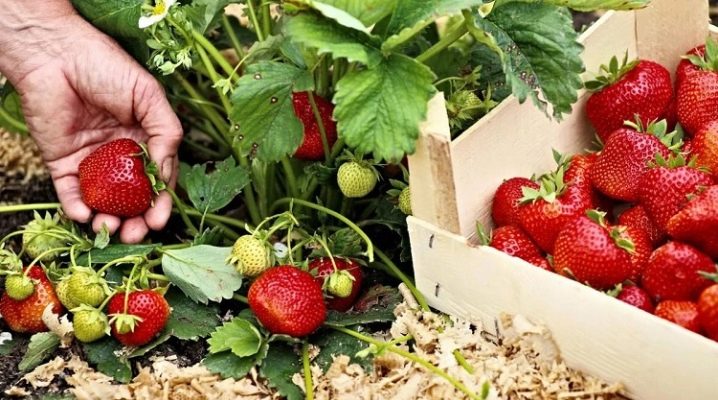
Strawberries are very popular among gardeners. They are sweet and delicious. Strawberries can be either simply eaten or used for cooking or canning. Therefore, it is grown in almost every summer cottage.
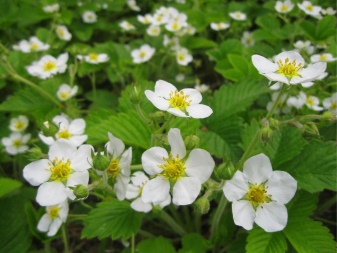
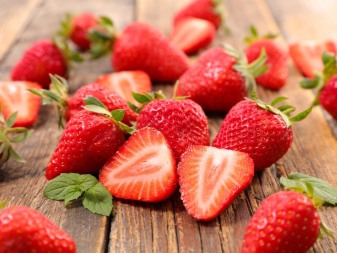
general description
Strawberries are popularly called garden strawberries (it is the last name that is considered correct) - this is a popular perennial plant that belongs to the pink family.
Her life form is grasses, class is dicotyledonous, genus is strawberry. The structure of the bush is very simple. It consists of a root system, leaves, tendrils, peduncles and a small annual horn. The berry is widespread in both Europe and Asia. The cultivated plant is small in size. Small and low bushes in late spring are covered with white or light pink flowers. Over time, fruits are tied on these bushes. As they ripen, the berries become red and large. The fruits are covered with small yellow seeds. The taste of the fruit can be either sweet or slightly sour. It depends on the variety you choose, as well as where the strawberry is growing.
Strawberries can be repaired and non-refurbished. The repair plant can bear fruit up to three times during the season. For the first time, berries of this group appear on the bushes in June. Strawberries begin to bear fruit again in the middle of summer. In some cases, the berries appear on the bushes in early September. In addition to the botanical description, it is worth talking about how beneficial strawberries are for human health. These sweet red fruits help to normalize blood pressure, reduce the risk of stroke, and strengthen teeth and bones.
Strawberries are good for both adults and children. It can be given to anyone who is not allergic to it.
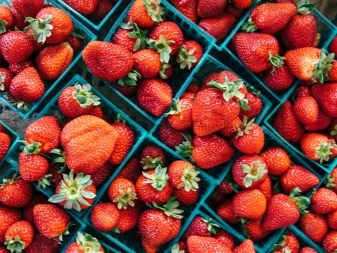
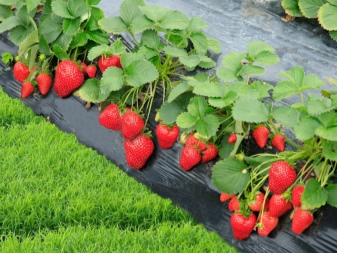
What is it - a berry or a nut?
Most people refer to strawberries as berries. But this is not entirely true. In botany, this is the name for a type of plant with juicy pulp and seeds inside. Therefore, strawberries are not officially a berry. The fruit growing on the bushes is a multi-nut. After all, on its surface, after ripening, there are small seeds or dry nuts. But the people still continue to call strawberries berries.
History of appearance
Strawberry is a plant that has a rather interesting origin. Wild bushes grew in Italy more than two thousand years ago. But in those days they were valued for other reasons. Strawberries were loved for their medicinal properties. People paid attention to its tasty fruits only in the 18th century. It happened in America. It was there that the first full-fledged varieties appeared, formed by crossing different types of berries.
Over time, this culture began to appear in European countries. From there she came to Russia. Strawberries began to grow fully only in the 19th century. The most popular were varieties originally from America. Nowadays, strawberries are grown almost all over the world. This plant is adapted to different types of climate. Therefore, it feels good everywhere.
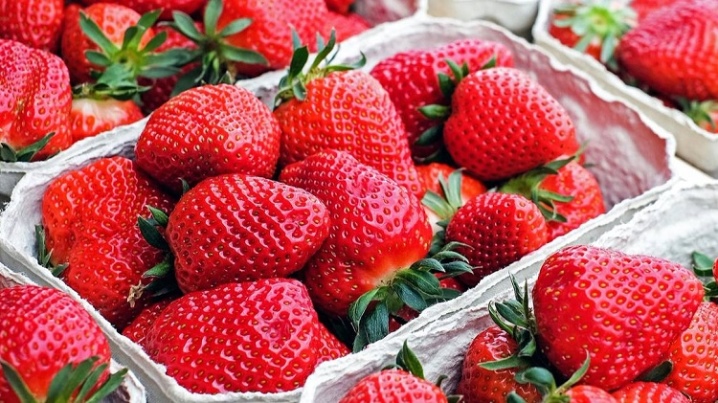
How is it different from Victoria?
Many gardeners who want to start growing this plant in their area are interested in how the ordinary garden strawberry differs from the Victoria berry. The difference lies in a few key points.
- The size of the bushes. The strawberry bushes are much larger.They also grow upward. At the same time, Victoria bushes usually lie on the ground.
- Drop off location. To get a good harvest of strawberries, it is recommended to plant them in a sunny area. Victoria berries grow better in the shade.
- The appearance of the berries. Another important difference is the size of the fruit. In strawberries, they are not very large and have a reddish or pink tint. Victoria berries are darker and larger.
Otherwise, these plants are similar. Therefore, gardeners can plant both ordinary strawberries and "Victoria" on their site.
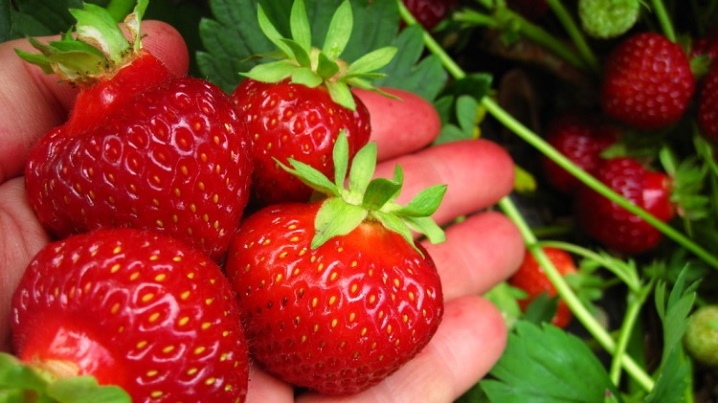
Overview of species and varieties
When choosing plants for your site, you should pay attention to the fact that now there are several types of strawberries. Some of them bear fruit once a season. These berries are divided into early and late varieties. Others bear fruit several times over the summer and are remontant. At the same time, it is worth remembering that it is much easier to care for ordinary strawberries.
A list of the most popular strawberry varieties will help a novice gardener choose the right plants for his site.
- Alba. This variety was developed in Italy. This variety is popular with those who grow strawberries on an industrial scale. It is resistant to diseases and pests. Garden strawberries are large and look beautiful. The fruit is great for canning or freezing.
- "Rosana". The homeland of this variety is Ukraine. Fruits appear on the bushes very early. You can enjoy their taste at the very beginning of summer. The berries have a pleasant taste and aroma. They are convenient to store and transport from place to place.
- "Evangeline"... This is another early strawberry variety. The fruits that appear on the bushes have a pleasant taste and are light red in color. They look very beautiful. It is also worth noting that strawberry bushes are winter-hardy.
- "Symphony". This strawberry is a mid-late variety. It is appreciated for its good yield, long lifespan and good taste. All these characteristics make strawberries suitable for planting even in small areas.
- "United Kingdom". This late variety appeared relatively recently. A large number of tasty and aromatic berries can be harvested from the bushes. The plant is unpretentious in care, but does not tolerate drought well.
Choosing any of these varieties, a person can count on a good harvest of berries.
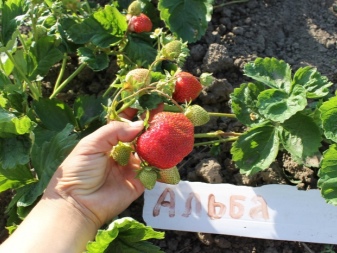
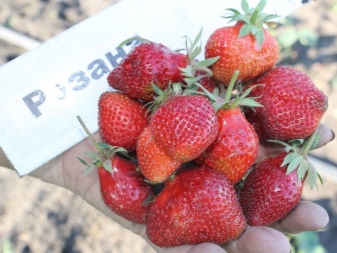
Landing dates
In order for the berries to bear fruit well, it is important to plant them on your site on time. This can be done both in spring and autumn. It all depends on the level of employment of gardeners. Autumn planting of strawberries can last from mid-August to the second half of September. After planting, the bushes take root quite quickly. Therefore, the gardener can harvest a good harvest next year.
In the spring, planting operations are carried out after the establishment of warm weather. This usually happens in mid-April. In cold regions, bushes are planted in open ground at the end of May. When planting strawberries, it is important to take into account the peculiarities of the local climate, as well as be guided by the weather forecast.

Growing methods
Most often, strawberry bushes are planted directly in open ground. This can be done in two ways.
- One line. This planting method is suitable for small areas. In this way, strawberries can be planted not only in the beds, but also in the garden, between the trees. The distance between different plants should be at least 15 centimeters.
- Two-line. In this way, strawberries are most often planted in the summer. The distance between the rows of strawberries is about 30 centimeters, between the individual plants - 20 centimeters. By growing berries in this way, you can count on a larger yield.
There are more interesting methods of growing strawberries.
- In bags. This method is suitable for planting plants in a small area. High-quality soil is poured into narrow plastic bags. Next, the soil is disinfected, and then the seedlings are planted in it.To do this, small holes are made in the bags, and small holes are dug in the slots. You can grow strawberries in this way both indoors and outdoors.
- Under agrofiber. This method of growing strawberries allows you to increase their yield, as well as significantly reduce the time spent on caring for them. Strawberries are planted on a plot covered with dense agrofibre with special holes. There it matures quickly and is not attacked by pests or diseases.
- In pots. The vertical method of growing berries is now popular among summer residents. Bushes can be planted not only in pots, but also in bottles or even pipes. It is very easy to care for such plants. Therefore, they grow quickly and delight people with a good harvest.
It is worth choosing how to plant strawberries, focusing on your own capabilities, as well as on the size of the site.
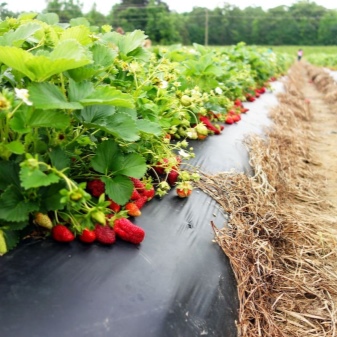

Landing technology
In order for strawberries to take root well and delight with an excellent harvest, it is important to adhere to simple rules when planting them.
- Observe the crop rotation. Strawberries are best planted in the place where green manure used to grow. It is not recommended to plant berries where there were previously beets, garlic or onions.
- Choose the right site. It should be well lit. When choosing a site, preference should be given to places with light sandy soil.
- Select high quality seedlings. They must be strong and healthy. It is best to buy seedlings in proven places. You shouldn't skimp on their quality.
- Prepare the site in advance. The soil must be dug up in advance. Manure or humus must be added to the soil. Some gardeners prefer to use special fertilizers designed for strawberries or strawberries. The prepared area must be left alone for a while.
- Dig deep holes. The rhizome must fit completely into the hole. In this case, its edges will not wrinkle.
Holes with bushes must be immediately sprinkled with earth, and then watered abundantly.

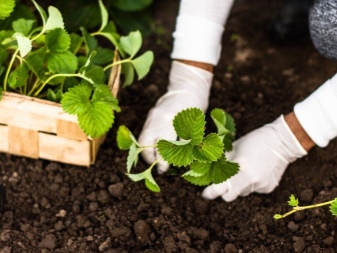
Care
In the future, young plants also need special care.
Watering
All bushes should be watered regularly. Lack of water leads to the fact that the roots of plants begin to dry out quickly. However, do not water the strawberry beds too often. This can lead to rot on the plants.
On average, strawberries are watered every 11-12 days. In hot weather, this is done more often. It is worth watering the bushes only in the morning. So there will be no burns on the leaves. It is necessary to pour water at the root, trying not to hurt the inflorescences and foliage.
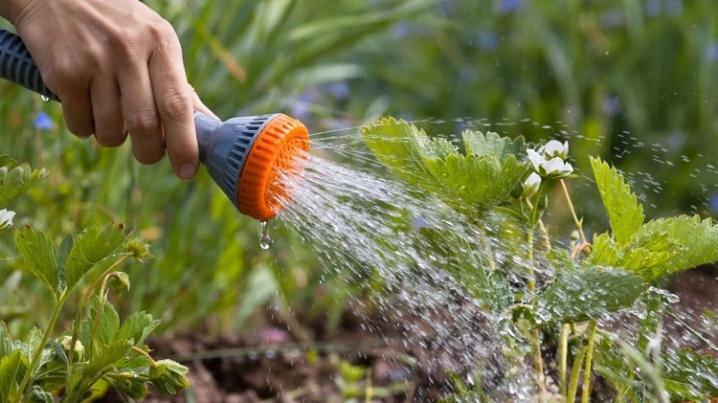
Top dressing
In the first year after planting, strawberries are usually not fed. Indeed, when planting a plant, a large amount of fertilizer is placed in the holes. In the future, the bushes are fed three times a year. In the spring, after removing excess foliage, mineral fertilizers or an infusion of mullein, diluted in a ratio of 1 to 10, are applied to the soil. Half a liter of liquid is usually poured under each bush.
During the period of fruit formation, the plant is fed with ash or infusion of chicken droppings. This contributes to the increase in the number of berries. For the August plant feeding, you can use urea. After such feeding, the area is watered with plenty of water.

Transfer
Strawberries can grow in one place for about 3-4 years. After that, its yield decreases markedly. Because of this, the plants have to be transplanted to a new site. To do this, you should always choose only healthy and strong bushes.
You can transplant strawberries both in spring and at the end of summer. To begin with, they are dug out of the ground. After that, the roots of the plants are placed in a solution of clay and manure. The strawberries are then planted in the usual way. After transplanting, the bushes are watered and then mulched.
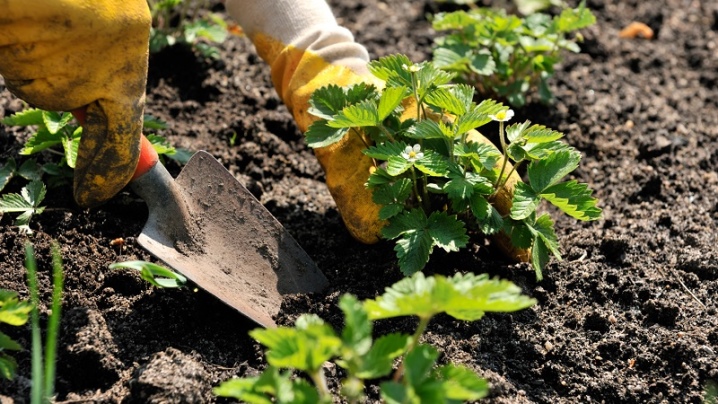
Pruning
Mature plants also need pruning. Gardeners are advised to regularly inspect the beds and remove any dried or stained leaves and tendrils from the bushes. This should be done either in the early morning or after sunset. A sharp pruner is usually used for pruning. He carefully removes everything unnecessary from the bushes, without injuring them.
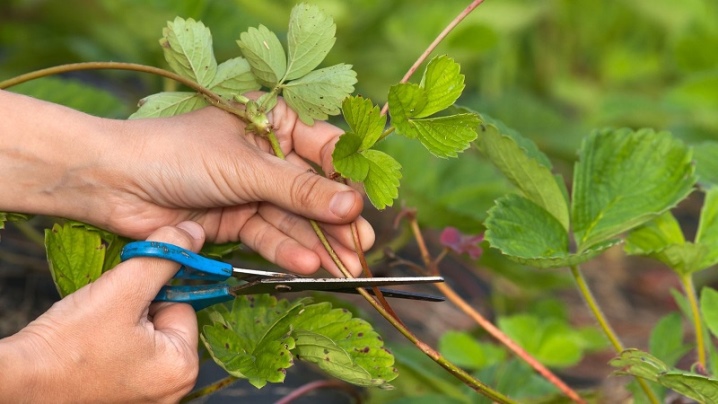
Reproduction
To increase the number of berries on the site, you can try to propagate strawberries yourself. This is done in several main ways.
Mustache
One of the most popular methods is to propagate strawberries with a mustache. For work, it is worth choosing biennial or annual bushes. Preference is usually given to those plants that bear fruit well. Large rosettes must be separated from the bushes. They must be planted in seedling pots and carefully pinned. Only the largest whiskers should remain on one bush. Thin and weakened ones must be removed.
In the middle of summer, when young leaves appear on the outlet, the remaining mustache must also be trimmed. The outlet itself at this time must be transplanted to a new location. It should be watered well immediately after planting.
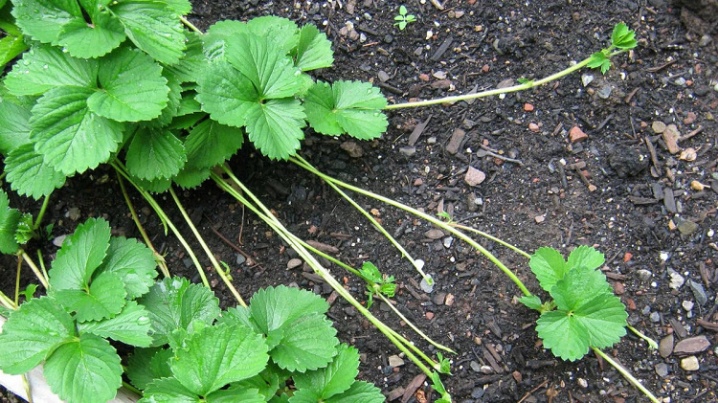
By dividing the bush
This method is suitable for propagating remontant strawberries. For division, healthy shrubs at the age of 2-3 years are used. They must have a well-developed root system. The bush can be dug up and divided in both spring and fall. It is important that each individual part has a rosette and strong roots. After dividing, the bush is immediately planted in a new area.
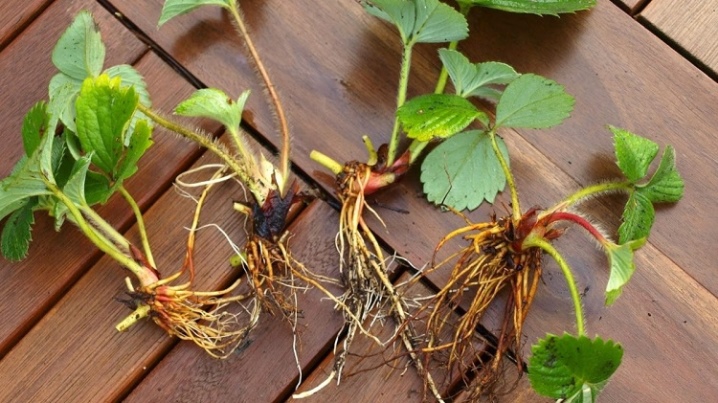
Seed
This is the most difficult way to propagate strawberries. It consists of several stages.
- In the second half of summer, you need to collect the ripe and largest berries.
- From them it is necessary to carefully cut off the pulp with seeds. Next, all this must be wiped through cheesecloth and dried in the sun.
- After separating the seeds, they must be folded into a paper bag. It will be possible to start planting only at the end of winter. At this time, they must be soaked in melt water. It needs to be changed regularly.
- After a week, you can start planting seeds. First you need to prepare a convenient container. A drainage layer is placed at its bottom, as well as humus. Fertile soil is laid on top.
- Next, the earth must be moistened. Small grooves need to be made on the surface of the soil. The seeds are placed in them. The container must be covered with glass or cling film, and then transferred to a warm place. The seed container must be regularly ventilated and watered.
- After the first shoots appear, the seedlings must be transferred to a bright place. After the formation of young leaves on them, the plants can be dived.
- After the second pick, the sprouts are allowed to be planted in a permanent place of growth.
If done correctly, strawberries will take root well.
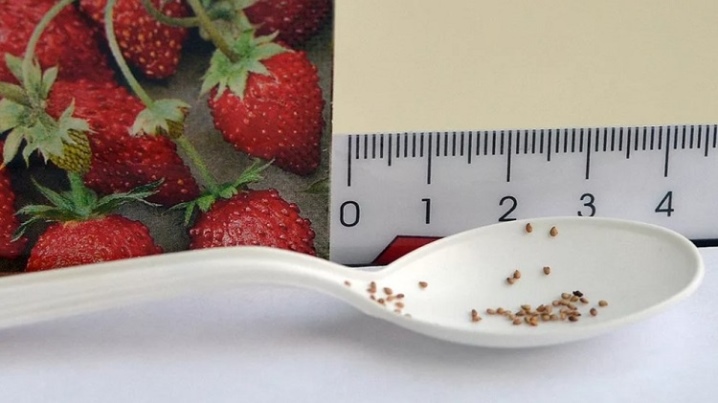
Diseases and pests
It is important for gardeners to pay attention to and protect plants from diseases and pests. Most commonly, strawberries suffer from diseases such as fruit or gray rot, brown or white spot, and jaundice. You can protect your beds from these diseases by regularly treating them with preventive drugs. This is done in early spring and also after harvest. In order to prevent the spread of diseases, it is also important to observe crop rotation and regularly inspect your site.
The most common insects that can harm bushes are nematodes, leaf beetles, weevils, and dark clickers. Timely preventive treatment will also help protect the site from these pests. Usually Bordeaux liquid or copper sulfate is used for this. In spring and autumn, it is also recommended to loosen the soil in the beds. This is done in order to destroy the eggs of pests, as well as those creatures that plan to spend the winter in warm soil.

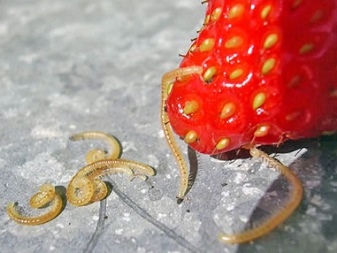
Interesting Facts
Strawberries are a popular herb. Many interesting facts are connected with it. Here are just a few of them.
- Berries can be used to prepare a wide variety of dishes. They go well not only with desserts, but also with meat dishes.
- Even diabetics can eat strawberries.
- Fresh fruits can be used to make face masks. They allow you to whiten your skin and fight acne scars.
- Strawberries are a natural aphrodisiac. Therefore, it is often included in the menu of dishes that are prepared for romantic dinners.
In general, growing strawberries is not a very difficult process. Therefore, having studied all its features, even a novice gardener can try to get a good harvest of berries.
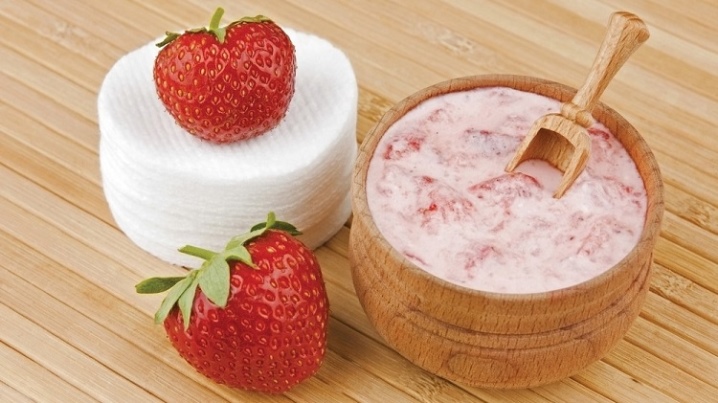



















The comment was sent successfully.